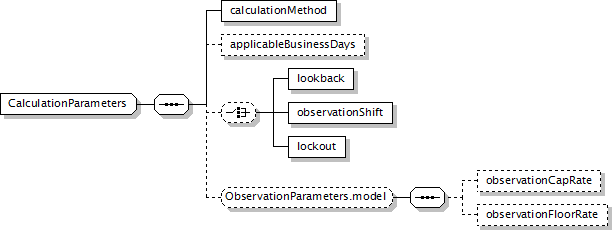Specifies the type of calculation, e.g. whether the calculation is a compounding or an averaging calculation. This element distinguishes between the applicable subsections of Section 7 (7.3, 7.4, and 7.7). If the calculationMethod is Componding or Averaging, this implies that a daily compounded calculation will be done, i.e. that the underlying rate will be observed eacy applicalbe business day during the observation period and then compounded or averaged. If it is CompoundedIndex, this means that the rate administrator is doing the compounding each day and publishing the resulting index value. In this case the calculation agent is responsible for observing the index and the start and at the end of the observation period, and then backing out the implied rate by following the formula in section 7.7. (This formula divides the index value at the end by the index value at the beginning, subtracts 1, and then scales the resulting value based on the year fraction to annualize the rate.) In other words, for CompoundedIndex the observation frequency is effectively 1T, where for Compounding and Averaging, it is 1D.
Simple Content
Enumeration: |
"Averaging" |
- |
The resulting value is based on the weighted arithmetic average of the observations performed by the calculation agent. These are described in the 2021 ISDA Definitions in Section 7.4
|
"Compounding" |
- |
The resulting value is based on a geometric averaging formula which is based on the multiplying the weighted daily rates. It is calculated by the calculation agent. These are described in the 2021 ISDA Definitions in Section 7.3
|
"CompoundedIndex" |
- |
The resulting value is based on a compounded index calculated by the rate administrator. The calculation agent is responsible for backing out the implied rate by calculating (final_index_level/initial_index_level - 1) / yearFraction. This calculation is described in Supplement 76 to the 2006 ISDA Definitions, for example in section 6.15, and in the 2021 ISDA Definitions in section 7.7.2 and 7.7.3.
|
|
XML Source (w/o annotations (1); see within schema source)

